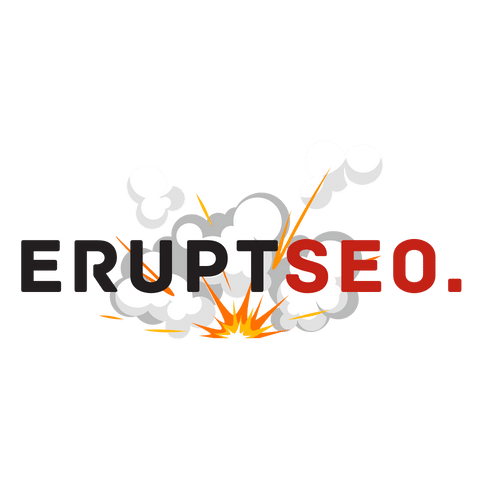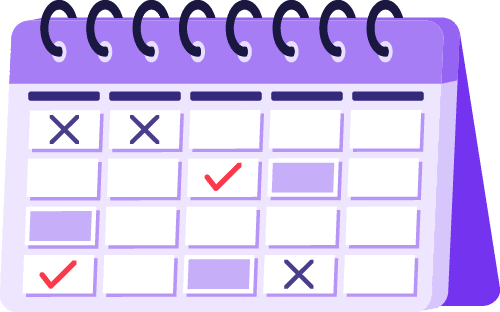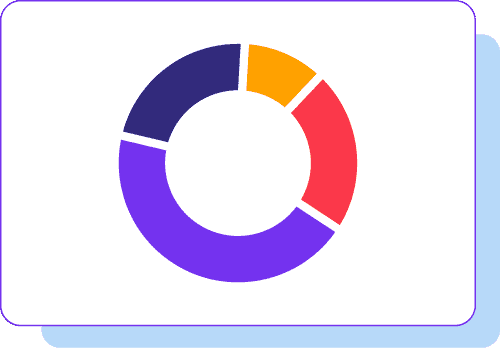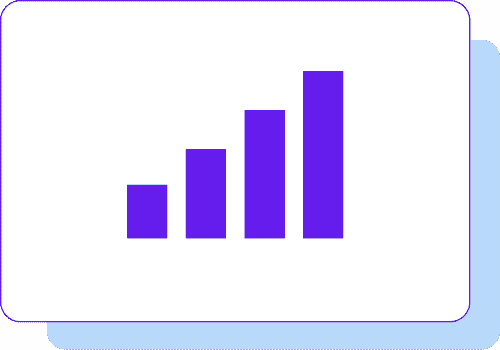Welcome to the Ultimate Guide to Pay-Per-Click (PPC) Advertising! In the ever-evolving landscape of digital marketing, PPC stands out as a dynamic and results-driven strategy. Whether you’re a seasoned marketer or just starting, this guide is your comprehensive resource for understanding, implementing, and optimising PPC campaigns to drive business success.
What is PPC?
PPC, or Pay-Per-Click, is a digital advertising model where advertisers pay a fee each time their ad is clicked. It’s a cost-effective way to drive targeted traffic to a website, generating leads, and boosting sales. Unlike traditional advertising, PPC allows businesses to control costs and precisely measure the return on investment (ROI).
The Evolution of PPC
Over the years, PPC has undergone significant transformations, adapting to the changing digital landscape. From its early days on search engines to the expansive networks of today, PPC has become a cornerstone of online marketing. Let’s delve into the evolution of PPC, exploring key milestones and pivotal changes that have shaped its current state.
| Year | Milestone |
|---|---|
| 2000 | Google AdWords launches, pioneering PPC advertising. |
| 2002 | AdWords introduces cost-per-click (CPC) bidding, allowing advertisers to set their bid for clicks. |
| 2005 | The launch of Google Analytics provides in-depth insights into website performance and user behavior. |
| 2010 | Rise of social media PPC, with platforms like Facebook introducing ad solutions. |
| 2013 | Google AdWords rebrands to Google Ads, reflecting its expansion beyond search into display and video advertising. |
| 2015 | The introduction of expanded text ads on Google Ads allows for more ad text and improved visibility. |
| 2020 | Enhanced targeting options, automation, and AI-driven optimisation become standard in PPC platforms. |
| 2021 | Google announces the phasing out of third-party cookies, shaping the future of online advertising. |
Benefits of PPC
Quick Results and Instant Visibility
Unlike organic methods, PPC delivers instant visibility. Your ads appear in search results or on websites as soon as the campaign is live, ensuring immediate exposure to your target audience.
Cost-Effectiveness and Measurable ROI
PPC allows you to set a budget and pay only when users click on your ads. With detailed analytics, you can measure every aspect of your campaign, from clicks to conversions, providing a clear ROI.
Components of a Successful PPC Campaign
In the dynamic realm of PPC advertising, mastering the components of a successful campaign is the key to unlocking its full potential. Let’s delve into each crucial element, offering insights and strategies to supercharge your PPC endeavors.
Keyword Research
Importance of Keyword Selection
Keywords are the building blocks of your PPC campaign. Choose them wisely to ensure your ads resonate with the right audience. Focus on relevance, search volume, and user intent.
Tools and Strategies
Utilise a combination of powerful tools like Google Keyword Planner, SEMrush, and Ahrefs. Conduct thorough research, exploring not only primary keywords but also long-tail variations for a comprehensive strategy.
Table: Example Keyword Research Metrics
| Keyword | Search Volume | Competition | Relevance to Business |
|---|---|---|---|
| PPC Management Tools | 5,000 | Medium | High |
| Best PPC Strategies | 3,500 | Low | High |
| Affordable PPC Services | 1,000 | High | Medium |
Ad Copywriting
Crafting Compelling Ad Copy
Your ad copy is the voice of your brand in the digital realm. Craft compelling headlines that grab attention, descriptions that resonate, and calls-to-action that prompt action.
Best Practices
Follow ad copy best practices such as incorporating relevant keywords, highlighting unique selling points, and creating a sense of urgency or exclusivity. Use language that aligns with your brand tone and resonates with your target audience.
Table: Ad Copy Best Practices
| Best Practice | Description |
|---|---|
| Keyword Integration | Integrate relevant keywords naturally into headlines and descriptions for SEO benefits. |
| Unique Selling Points | Clearly communicate what sets your product or service apart from competitors. |
| Urgency and Exclusivity | Create a sense of urgency through limited-time offers or exclusivity for your audience. |
| Brand Tone Alignment | Ensure the language and tone of your ad copy align with your overall brand messaging. |
Table: Ad Copy Checklist
| Element | Guidelines |
|---|---|
| Headline | Grab attention with a concise, impactful message. Include keywords when relevant. |
| Description | Communicate the value proposition clearly. Create a sense of urgency or exclusivity. |
| Call-to-Action (CTA) | Prompt action with a compelling CTA. Examples: “Shop Now,” “Learn More,” “Get Started.” |
Ad Extensions
Understanding Ad Extensions
Ad extensions provide additional real estate for your ad, offering more information to potential customers. Leverage different types of extensions strategically to enhance user experience.
Effective Usage
Tailor ad extensions to your business goals. Use site link extensions to direct users to specific pages, callout extensions to highlight benefits, and structured snippets to showcase key features or services.
Table: Types of Ad Extensions
| Extension Type | Purpose |
|---|---|
| Site Link Extensions | Direct users to specific pages on your website. |
| Callout Extensions | Highlight key benefits or unique selling points. |
| Structured Snippets | Showcase additional features, services, or product categories. |
Bidding Strategies
Your bidding strategy dictates how you pay for clicks and plays a crucial role in the success of your campaign. Understand the nuances of different strategies to align with your campaign objectives.
Regularly analyse performance data and make strategic bid adjustments. Allocate budget where it matters most, ensuring maximum impact and cost-effectiveness.
Table: Common Bidding Strategies and Use Cases
| Bidding Strategy | Use Case |
|---|---|
| Manual CPC | Full control over individual bid amounts, suitable for experienced advertisers. |
| Automatic CPC | Allow the platform to adjust bids based on likelihood of conversion, ideal for beginners. |
| Target CPA | Set a target cost per acquisition, suitable for campaigns focused on specific conversions. |
Setting Up Your PPC Campaign
As we progress through the Ultimate Guide to Pay-Per-Click (PPC) Advertising, this pivitol section is dedicated to the fundamental step of setting up your PPC campaign. This section will serve as your comprehensive guide, providing insights into the essential components for a successful launch.

Creating a Google Ads Account
Step-by-Step Guide
Creating a Google Ads account is the first crucial step in your PPC journey. Follow these steps to ensure a seamless setup:
- Visit Google Ads: Navigate to the Google Ads platform and click on “Start Now.”
- Account Type: Choose between “Standard” and “Express” setup. For more control and features, opt for the standard setup.
- Campaign Type: Select your campaign goal, whether it’s sales, leads, or website traffic.
- Target Audience: Define your target audience based on demographics, interests, and online behavior.
- Budget and Bidding: Set a daily budget and choose a bidding strategy that aligns with your campaign goals.
- Ad Creation: Craft compelling ad copy and choose relevant keywords.
- Review and Launch: Double-check your settings and launch your campaign.
Tips for Account Setup
Ensure your account is well-organised. Create campaigns based on specific products, services, or objectives. Use ad groups to further segment and tailor your ad content.
Checklist for Google Ads Account Setup
Google Ads Account Setup Checklist
Campaign Types and Goals
Understanding Campaign Types
Different campaign types cater to distinct objectives. Understanding each type ensures you choose the most suitable one for your business goals.
Your campaign type should align with specific business objectives. Whether it’s driving sales, generating leads, or increasing brand visibility, choose the type that best serves your purpose.
Table: Matching Campaign Types with Business Goals
| Campaign Type | Business Goal |
|---|---|
| Search Campaigns | Drive website visits and capture users actively searching for your products or services. |
| Display Campaigns | Increase brand visibility and reach a broader audience through visually engaging ads. |
| Video Campaigns | Showcase your products or brand through engaging video content on platforms like YouTube. |
| Shopping Campaigns | Promote and sell products directly through visually rich ads on the Google Shopping network. |
| App Campaigns | Boost app installations and engagement for businesses with mobile applications. |
Targeting Options
Defining Target Audiences
When it comes to PPC advertising, targeting the right audience is crucial for the success of your campaign. Display advertising offers a variety of targeting options to ensure your ads are shown to the most relevant audience. Let’s delve into these options and explore how to implement them effectively.
Table: Targeting Options and Audience Refinement
| Targeting Option | Description | How to Implement |
|---|---|---|
| 1. Keyword Targeting | Display ads on websites and pages that contain specific keywords related to your business. | Choose relevant keywords and let Google’s Display Network place your ads on websites where these keywords are present. |
| 2. Placement Targeting | Handpick specific websites or online placements where you want your ads to appear. | Identify high-performing websites within your niche and add them as placements in your campaign settings. |
| 3. Interest Targeting | Target users based on their interests, behaviors, and online activities. | Select specific interests or categories that resonate with your target audience. Google will display your ads to users interested in these topics. |
| 4. Demographic Targeting | Tailor your ads based on demographics such as age, gender, and parental status. | Adjust your campaign settings to target specific demographics. Ensure your ads are seen by users who are more likely to engage. |
| 5. Remarketing | Reconnect with users who have previously visited your website. | Install a remarketing tag on your website and create a campaign to target users who have shown interest but didn’t convert. |
| 6. Topic Targeting | Display ads on websites that cover specific topics or themes. | Choose relevant topics related to your business. Your ads will then appear on websites discussing or featuring content related to those topics. |
| 7. Custom Affinity Audiences | Reach users with specific interests and behaviors. | Create custom affinity audiences based on user interests, URLs they visit, and other online activities. Google will match your ads with users who fit these criteria. |
| 8. In-market Audiences | Target users actively searching for products or services similar to yours. | Select in-market audiences related to your offerings. Google will show your ads to users who are actively researching and comparing products. |
| 9. Life Events Targeting | Reach users experiencing major life events, such as getting married or moving. | Choose life events targeting in your campaign settings and tailor your ads to users undergoing specific life changes. |
| 10. Geo-Targeting | Show your ads to users based on their location. | Specify the geographical locations where you want your ads to be displayed. Ensure your ads are relevant to users in specific regions. |
Crafting Compelling Ad Creatives
In the realm of PPC advertising, the success of your campaign hinges on the potency of your ad creatives. Crafting compelling ads requires a nuanced understanding of key elements that capture attention and incite user action. Let’s delve into the essential components of creating persuasive ad creatives and explore best practices to ensure resonance with your target audience.
Elements of a Compelling Ad Creative
The headline serves as the gateway to your ad, demanding immediate attention. A concise, attention-grabbing headline communicates the primary benefit or message. The ad copy, the narrative core, elaborates on your offering, emphasising the unique value proposition and addressing user needs. Imagery, a visual cornerstone, demands high quality, relevance, and attention-grabbing qualities. Lastly, a well-crafted call-to-action (CTA) prompts users to take the desired action, using compelling verbs and creating a sense of urgency. The URL display contributes to the ad’s aesthetics, offering a clean and relevant glimpse of the destination.
Best Practices for Ad Creatives
Conciseness is key; keep messaging brief and impactful. Incorporate power words that evoke emotion and persuade. Experiment with A/B testing to refine ad elements and maximise effectiveness. Optimise for mobile devices, ensuring a seamless experience for users on various platforms. Highlight benefits over features to emphasise the value proposition. Use dynamic keyword insertion for personalised ads based on user search queries. Leverage ad extensions to provide additional information and improve visibility.
Crafting Compelling Visuals
High-quality images are paramount, providing visual appeal aligned with your brand. Consistency in branding elements, such as color schemes and logos, reinforces your brand identity. Experiment with different ad formats, including static images, carousels, or videos, to discover what resonates best with your audience.
Ad Performance Analysis
Key metrics like click-through rate (CTR), conversion rate, and cost per click (CPC) should be regularly monitored to track ad performance. User feedback and comments offer valuable insights into how your audience perceives your ads and areas for improvement.
Ad Creative Key Elements Summary Table
| Element | Description | How to Implement |
|---|---|---|
| Headline | Craft a concise, attention-grabbing headline that communicates the primary benefit or message. | Choose relevant keywords and let Google’s Display Network place your ads on websites where these keywords are present. |
| Ad Copy | Elaborate on your offering, emphasising the unique value proposition and addressing user needs. | Identify high-performing websites within your niche and add them as placements in your campaign settings. |
| Imagery | Use high-quality images or graphics that are relevant to your product or service. Ensure they are attention-grabbing and convey your brand message. | Select specific interests or categories that resonate with your target audience. Google will display your ads to users interested in these topics. |
| Call-to-Action (CTA) | Prompt users to take the desired action using compelling verbs and creating a sense of urgency. | Adjust your campaign settings to target specific demographics. Ensure your ads are seen by users who are more likely to engage. |
| URL Display | Ensure the displayed URL is clean and relevant, contributing to the overall aesthetics of the ad. | Install a remarketing tag on your website and create a campaign to target users who have shown interest but didn’t convert. |
By strategically incorporating these elements and following best practices, you can elevate your ad creatives, enhancing their effectiveness and driving meaningful results in your PPC advertising campaign. Adjust these recommendations based on your industry and audience for optimal impact.
Landing Page Optimisation for PPC Success
As your PPC ad captures the attention of potential customers, the journey doesn’t end there. The landing page plays a pivotal role in converting clicks into meaningful actions. In this section, we’ll explore the critical aspects of landing page optimisation to ensure a seamless transition from ad engagement to user conversion.

Elements of an Effective Landing Page:
| Element | Description | How to Implement |
|---|---|---|
| Relevance to Ad Content | Ensure seamless alignment with ad content for consistency in messaging and visuals. | Maintain consistency in branding elements across all ad creatives. |
| Compelling Headline and Copy | Craft a clear and compelling headline with concise and persuasive copy to guide users towards the desired action. | Keep messaging brief and impactful. Incorporate power words that evoke emotion. |
| Visual Appeal | Utilise engaging visuals, such as relevant images or videos, to enhance the overall appeal of the landing page. | Experiment with various visual elements to discover what resonates best. |
| Clear Call-to-Action (CTA) | Implement a prominent and clear CTA that mirrors the ad’s CTA, directing users toward the next steps for conversion. | Use consistent and compelling CTAs to guide users on the desired path. |
Best Practices for Landing Page Optimisation
| Best Practice | Description | How to Implement |
|---|---|---|
| Mobile Responsiveness | Ensure your landing page is optimised for mobile devices to enhance user experience. | Use responsive design to accommodate users accessing your page from various devices. |
| Streamlined Navigation | Keep navigation simple and intuitive, reducing bounce rates and aiding user exploration. | Create clear pathways for users to follow, guiding them seamlessly through your content. |
| Relevant Content | Provide content that directly addresses user intent, answering questions and guiding users toward the desired action. | Develop content that aligns with user expectations, addressing their needs and concerns. |
| Form Optimisation | Optimise form length and complexity to balance necessary information collection with user convenience. | Simplify forms while collecting essential information to encourage higher completion rates. |
| Page Load Speed | Optimise page speed for a positive user experience. | Minimise image sizes, reduce unnecessary scripts, and leverage content delivery networks. |
A/B Testing for Landing Page Performance:
| Testing Aspect | Description | How to Implement |
|---|---|---|
| Test Different Headlines and Copy | Experiment with variations of headlines and ad copy on your landing page to identify the most effective messaging. | Use A/B testing tools to compare performance and select elements that resonate best. |
| CTA Button Variations | Test different colors, text, and placement of your call-to-action buttons to determine the optimal configuration. | Monitor conversion rates based on variations and choose the most effective CTA format. |
| Visual Content Testing | A/B test different visual elements, such as images or videos, to understand which ones contribute most positively to user engagement and conversion. | Analyse user interactions and conversion rates to identify the most effective visuals. |
Monitoring and Analysis
| Analysis Aspect | Description | How to Implement |
|---|---|---|
| Conversion Tracking | Implement robust conversion tracking tools to monitor user actions on your landing page. | Use tools like Google Analytics to track user interactions and conversions. |
| User Feedback | Collect user feedback through surveys or analytics. Understand user sentiments and adapt your landing page. | Use surveys, feedback forms, or analytics to gather insights into user perceptions. |
By implementing these strategies and regularly analysing performance metrics, you can optimise your landing pages for maximum effectiveness and enhance the overall success of your PPC campaign. Adjust strategies based on ongoing performance analysis and user feedback.
Budget Management and Bid Strategies
Managing your budget effectively and employing the right bidding strategies are crucial aspects of running a successful PPC campaign. In this section, we’ll explore the intricacies of budget management and delve into strategic bidding approaches to maximise the impact of your advertising spend.
Setting a Realistic Budget
Understanding Your Financial Capacity: Before delving into the specifics of your PPC budget, it’s imperative to assess your overall financial capacity. Consider your business goals, revenue projections, and the amount you’re willing to allocate to digital advertising. This evaluation will serve as the foundation for crafting a budget that aligns with your business objectives.
Allocating Budgets to Campaigns: Distribute your budget strategically among different campaigns based on their priority and performance expectations. High-priority campaigns, such as those targeting core products or services, might warrant a larger share of your budget, while lower-priority campaigns can receive proportionately less.
Cost-Per-Click (CPC) Bidding Strategies:
Manual CPC Bidding: This traditional bidding strategy allows you to set individual bids for each ad group or keyword. It provides granular control over your bids, making it suitable for advertisers who prefer a hands-on approach to campaign management. Adjust bids based on the performance of specific keywords or ad groups to optimise your campaign’s effectiveness.
Automated Bidding Strategies: Automated bidding strategies leverage machine learning and data analysis to adjust bids in real-time, maximising performance based on your campaign goals. Options like Target CPA (Cost Per Acquisition), Target ROAS (Return on Ad Spend), and Maximise Conversions enable Google’s algorithms to optimise bids for conversions or specific return targets.
Adapting to Budget Changes
Scaling Up Successfully: As your business grows, you may consider increasing your PPC budget to capitalise on new opportunities and reach a wider audience. Assess the performance of existing campaigns and identify areas with the potential for increased investment.
Mitigating Budget Constraints: During lean periods or unforeseen circumstances, you might need to adjust your budget. Prioritise high-impact campaigns, and consider allocating funds strategically to maintain visibility in key areas while minimising the impact of budget constraints.
Monitoring and Analytics
Regular Performance Analysis: Implement a routine for monitoring your campaign’s performance against set objectives. Utilise platforms like Google Analytics to track key metrics such as click-through rate (CTR), conversion rate, and return on investment (ROI). Regular analysis helps you identify trends, opportunities, and areas for optimisation.
Budget Allocation Refinement: Based on the insights gained from performance analysis, refine your budget allocation to ensure optimal results. Adjust bids for high-performing keywords or campaigns, and reallocate budget from underperforming areas to those demonstrating stronger potential for conversion.
Budget Management and Bid Strategies Summary Table
| Aspect | Description | How to Implement |
|---|---|---|
| Setting a Realistic Budget | Assess your overall financial capacity, considering business goals and revenue projections. Allocate budgets strategically. | Regularly evaluate your financial standing and adjust budgets based on business objectives and priorities. |
| Cost-Per-Click (CPC) Bidding Strategies | Choose between manual CPC bidding for hands-on control or automated strategies like Target CPA for algorithmic optimisation. | Experiment with both manual and automated bidding to find the strategy that aligns best with your campaign goals and preferences. |
| Adapting to Budget Changes | Scale up during growth periods, and mitigate budget constraints during lean periods by prioritising high-impact campaigns. | Be flexible and adjust your budget based on the evolving needs and circumstances of your business. |
| Monitoring and Analytics | Regularly analyse campaign performance using tools like Google Analytics. Refine budget allocations based on performance data. | Implement a routine for monitoring and analysing key metrics, using insights to optimise budget allocation and bidding strategies. |
By implementing effective budget management and bid strategies, you can ensure that your PPC campaigns not only stay within financial constraints but also deliver optimal results. Regular analysis and adaptation are key to navigating the dynamic landscape of online advertising successfully. Adjust strategies based on ongoing performance analysis and industry trends.
Ad Extensions for Enhanced Visibility
Ad extensions play a pivotal role in elevating the visibility and engagement of your PPC ads. In this section, we’ll explore the diverse range of ad extensions available and how strategically incorporating them can enhance your ad’s appeal, providing users with more information and compelling reasons to click.

What Are Ad Extensions?
Definition and Purpose: Ad extensions are additional snippets of information that expand your ad, providing users with more details about your business or specific offerings. Google Ads supports various ad extensions, each serving a unique purpose to augment your ad’s visibility and effectiveness.
Types of Ad Extensions
Sitelink Extensions: Enhance your ad with additional links that direct users to specific pages on your website. Sitelink extensions provide a direct path to relevant content, products, or services, improving user experience and increasing the likelihood of conversion.
Callout Extensions: Convey additional benefits, features, or promotions with callout extensions. These brief snippets of text highlight key selling points, fostering interest and encouraging users to explore your offerings further.
Structured Snippet Extensions: Provide specific details about your products or services using structured snippet extensions. Showcase categories, brands, or features, offering users a more comprehensive understanding of what your business provides.
Location Extensions: For businesses with physical locations, location extensions display your address, contact details, and a map, making it easy for users to find and visit your store. This extension is invaluable for driving foot traffic to brick-and-mortar establishments.
How Ad Extensions Benefit Your Campaign
Increased Visibility and Credibility: Ad extensions make your ads more prominent on the search results page, occupying additional real estate and attracting more attention. The added information instills confidence in users and contributes to your business’s credibility.
Higher Click-Through Rates (CTR): Ads with extensions often experience higher click-through rates. Users are more likely to interact with ads that provide comprehensive information, as they find them more relevant and valuable to their search intent.
Creating Compelling Ad Extensions
Relevance to Ad Content: Ensure that your ad extensions align with the content and messaging of your ad. Consistency in information reinforces your brand message and helps users navigate seamlessly from your ad to your landing page.
Regular Monitoring and Optimisation: Periodically review the performance of your ad extensions. Identify which extensions contribute most effectively to your campaign goals and adjust them accordingly. Remove or modify underperforming extensions to streamline your messaging.
Ad Extensions for Enhanced Visibility Summary Table
| Ad Extension Type | Description | How to Implement |
|---|---|---|
| Sitelink Extensions | Provide additional links directing users to specific pages on your website. Enhance user experience and increase the likelihood of conversion. | Choose relevant and high-performing pages to feature as sitelink extensions. Regularly update them to align with your current marketing priorities. |
| Callout Extensions | Convey additional benefits, features, or promotions with brief snippets of text. Foster interest and encourage users to explore your offerings. | Highlight unique selling points and promotions. Keep callouts concise and impactful to capture user attention effectively. |
| Structured Snippet Extensions | Provide specific details about your products or services, showcasing categories, brands, or features. Offer users a more comprehensive understanding. | Tailor structured snippets to align with user interests and preferences. Regularly update them to reflect changes in your product or service offerings. |
| Location Extensions | Display your business address, contact details, and a map for users seeking physical locations. Drive foot traffic to brick-and-mortar establishments. | Ensure accurate and up-to-date location information. Utilise this extension to promote special in-store events or promotions. |
By leveraging various ad extensions strategically, you can enrich the content and appeal of your PPC ads, providing users with a more immersive and informative experience. Regularly assess the performance of your ad extensions and refine them to align with changing business priorities and user expectations.
Remarketing Strategies for Targeted Engagement
Remarketing is a powerful digital marketing strategy that enables you to reconnect with users who have previously interacted with your website or app. In this section, we’ll explore the dynamics of remarketing, its diverse applications, and strategies to effectively engage and convert your audience.
Understanding Remarketing
Definition and Purpose: Remarketing, also known as retargeting, involves displaying targeted ads to users who have visited your website or engaged with your content. The primary goal is to rekindle interest and encourage users to revisit your site, complete a desired action, or make a purchase.
Types of Remarketing
Standard Remarketing: Show ads to previous visitors across the Google Display Network or other ad networks. Standard remarketing is effective for maintaining brand awareness and encouraging users to return to your site.
Dynamic Remarketing: Display personalised ads featuring specific products or services that users viewed on your website. Dynamic remarketing enhances relevance, reminding users of items they showed interest in and encouraging them to complete the purchase.
Remarketing Lists for Search Ads (RLSA): Customise your search ads for users who have previously visited your site. RLSA allows you to adjust bids or display specific ads to users searching for related keywords on search engines.
Crafting Effective Remarketing Strategies:
Segmentation and Audience Targeting: Segment your audience based on their behavior on your site. Create specific remarketing lists for different user actions, such as product page views, cart abandonment, or completed transactions. Tailor your ads to align with each segment’s interests and intent.
Compelling Ad Creatives: Develop visually appealing and compelling ad creatives that resonate with your audience. Highlight promotions, discounts, or unique selling points to entice users back to your site. Utilise dynamic remarketing for personalised product recommendations.
Strategic Bid Adjustments: Adjust bidding strategies for users in different remarketing lists. Allocate higher bids for users who have shown strong intent, such as those who visited the checkout page. This ensures your ads are competitive and visible to users with higher conversion potential.
Utilising Cross-Device Remarketing
Seamless User Journey: Implement cross-device remarketing to maintain a seamless user experience as users transition between devices. Ensure that your ads are optimised for various screen sizes and formats, providing a consistent message across devices.
Adapting Messaging for User Progression: Craft tailored messages based on where users are in their journey. For users who abandoned their cart, emphasise incentives or limited-time offers. For users who previously made a purchase, showcase related products or exclusive loyalty rewards.
Remarketing Strategies for Targeted Engagement Summary Table
| Remarketing Type | Description | How to Implement |
|---|---|---|
| Standard Remarketing | Display ads to previous visitors across ad networks. Effective for brand awareness and encouraging return visits. | Regularly update ad creatives to maintain relevance and capture users’ attention. |
| Dynamic Remarketing | Show personalised ads featuring specific products or services viewed by users. Enhance relevance and encourage conversions. | Implement dynamic remarketing tags to automatically generate ads based on users’ interactions with your site. |
| Remarketing Lists for Search Ads (RLSA) | Customise search ads for users who have previously visited your site. Adjust bids and tailor ads for specific audiences. | Leverage RLSA to bid more aggressively for high-intent users, maximising visibility and increasing the likelihood of conversions. |
| Cross-Device Remarketing | Extend remarketing efforts seamlessly across different devices to provide a consistent user experience. | Optimise ad creatives for various screen sizes and formats. Implement cross-device tracking to understand user behavior across devices. |
By incorporating remarketing strategies into your digital marketing arsenal, you can reconnect with your audience, nurture leads, and drive conversions. Tailor your approach to align with user segments and behaviors, ensuring that your remarketing efforts resonate with your audience at every stage of their journey. Regularly analyse performance metrics and refine your strategies based on evolving user interactions and campaign objectives.
Troubleshooting and Common Challenges in PPC
Navigating the complexities of PPC advertising involves overcoming various challenges. This section explores common issues faced by advertisers and provides strategies to troubleshoot and address these challenges effectively.
Ad Quality Issues
Low-quality scores can hinder the performance of your PPC campaigns. Explore strategies to enhance ad relevance and landing page experience, key factors influencing quality scores.
| Challenge | Solution |
|---|---|
| Low-Quality Scores | Craft targeted ad copies aligned with specific keywords. Optimise landing pages for relevance and user experience. |
| Improving Ad Relevance | Enhance ad content to address the needs and expectations of your target audience. |
| Enhancing Landing Page | Optimise landing pages for a seamless user experience. Prioritise mobile responsiveness and fast loading times. |
Click Fraud
Click fraud involves fraudulent clicks on ads, impacting campaign performance and wasting ad budget. Gain insights into the various forms of click fraud and how it can affect your PPC efforts.
TOP TIP: Implement proactive measures to prevent click fraud, such as using click fraud detection tools, monitoring click patterns, and setting daily click limits. Regularly review performance metrics to identify unusual click patterns.
Ad Fatigue
Ad fatigue occurs when audiences become less responsive to an ad due to repetitive exposure. Learn to recognise signs of ad fatigue and explore strategies to overcome this challenge.
TOP TIP: Rotate ad creatives regularly to introduce variety. Experiment with different messaging, visuals, and offers to maintain audience interest. Monitor performance metrics to identify when ad fatigue might be setting in.
| Challenge | Solution |
|---|---|
| Recognising Ad Fatigue | Monitor metrics for signs of decreased engagement and responsiveness to your ad content. |
| Keeping Ad Content Fresh | Rotate ad creatives regularly, experiment with different messaging, visuals, and offers. |
Conclusion
In this comprehensive guide, we’ve delved into the intricacies of PPC advertising, exploring strategies for success and addressing common challenges. As you navigate the ever-evolving landscape of digital advertising, remember to stay proactive in refining and optimising your PPC strategies.
Recap of Key Points Covered
- Strategic Bidding: Adjust bids based on campaign goals and user behavior.
- Ad Creatives: Craft compelling ad creatives aligned with user intent.
- Audience Targeting: Utilise precise targeting options for optimal reach.
- Remarketing: Reconnect with previous visitors for increased conversions.
- Social Media Advertising: Leverage diverse platforms for targeted engagement.
- Troubleshooting: Address ad quality issues, click fraud, and ad fatigue effectively.
The world of PPC is dynamic, and success hinges on adaptability and continuous optimisation. Stay informed about industry trends, monitor performance metrics, and be proactive in refining your strategies. By embracing a mindset of continual improvement, you’ll maximise the effectiveness of your PPC campaigns and achieve sustained success in the digital advertising landscape.















